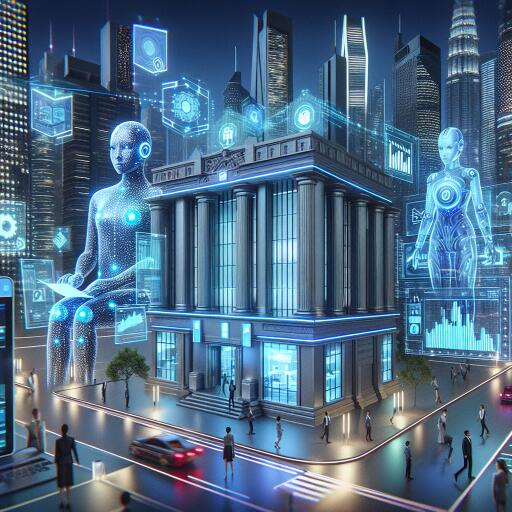AI Bankers are Already a Reality
In a world where technology continuously reshapes how we conduct our daily lives, artificial intelligence (AI) has now started to transform the banking sector. Traditionally, ATMs revolutionized how we accessed our money, automating the need for teller assistance for basic transactions. Today, AI is taking another step forward by managing the customer service aspect, handling repetitive questions and providing information just like a bank teller would, but with more efficiency.
A report from financial giant Citigroup has shed light on the financial benefits of AI integration in banking, projecting an increase in profits from $1.7 trillion to nearly $2 trillion by 2028. Initially, the incorporation of AI in banking has focused on optimizing existing products and improving productivity, including taking over the repetitive and time-consuming task of addressing frequently asked customer queries.
One notable innovator at the forefront of this AI revolution is DeepBrain AI, a California-based generative AI startup founded in 2016 by Eric Seyoung Jang. DeepBrain AI has dramatically changed how customer service is provided in South Korean banks, such as KB Kookmin Bank, by implementing customer-facing AI avatars in local branches.
The startup’s journey began with chatbots before pivoting to AI-powered avatars, specializing in generative text-to-video human avatars. DeepBrain AI has collaborated with tech giants including NVIDIA, Lenovo, Microsoft, and AWS to bring their vision to life.
Why Implement AI Bankers?
The adoption of AI bankers was partly driven by the need to improve customer service efficiency in bank branches. Jungwook (John) Son, DeepBrain’s global marketing manager, explained how their AI avatars initially served as lobby leaders in bank branches, tasked with handling the repetitive questions that occupy a significant part of a banker’s day. By deploying AI bankers, banks aim to alleviate the workload on human staff, allowing them to focus on more complex customer interactions.
“KB Bank saw value in having AI bankers for their consistent service delivery. The AI never tires, remains perpetually patient, and delivers information with a smile, ensuring customer queries are addressed without fail,” Son articulated.
Are AI Bankers Replacing Human Jobs?
The notion that AI could replace human jobs, particularly in banking, is a widespread concern. However, evidence suggests otherwise. The technology has been introduced to take on monotonous tasks, thus freeing human bank staff to engage with customers on matters requiring human insight and empathy. The Citi report highlights that, historically, technological advancements have not reduced jobs in finance but instead changed the workforce composition over time, a demonstration of Jevons Paradox.
Furthermore, the transition toward AI in banking is not expected to eliminate jobs but to change the nature of work, making it more efficient and diversified. The financial sector is seeing a creation of new roles, such as compliance officers, whose numbers have significantly grown.
What Does the Future Hold?
DeepBrain AI’s success in integrating AI avatars into various sectors hints at the broader potential applications of this technology. From retail to broadcasting, the demand for AI-powered interfaces and representatives is growing. DeepBrain AI has even ventured into the creation of AI ambassadors for sports teams and brands, showcasing the versatility and appeal of their technology.
In banking, the ambition is to further personalize customer experience through AI. “Moving forward, we aim to integrate AI avatars into mobile banking apps, providing customers with a more personalized and efficient banking experience. This will eventually lead to face-to-face conversational services within these apps, offering customers their own personal AI banker,” Son revealed.
The rise of AI bankers signifies a profound shift in the banking industry, reflecting a broader trend towards digital transformation and personalized customer service. As AI continues to evolve, its potential to enhance various aspects of banking and customer interaction seems boundless, heralding a new era of efficiency and personalization in financial services.
